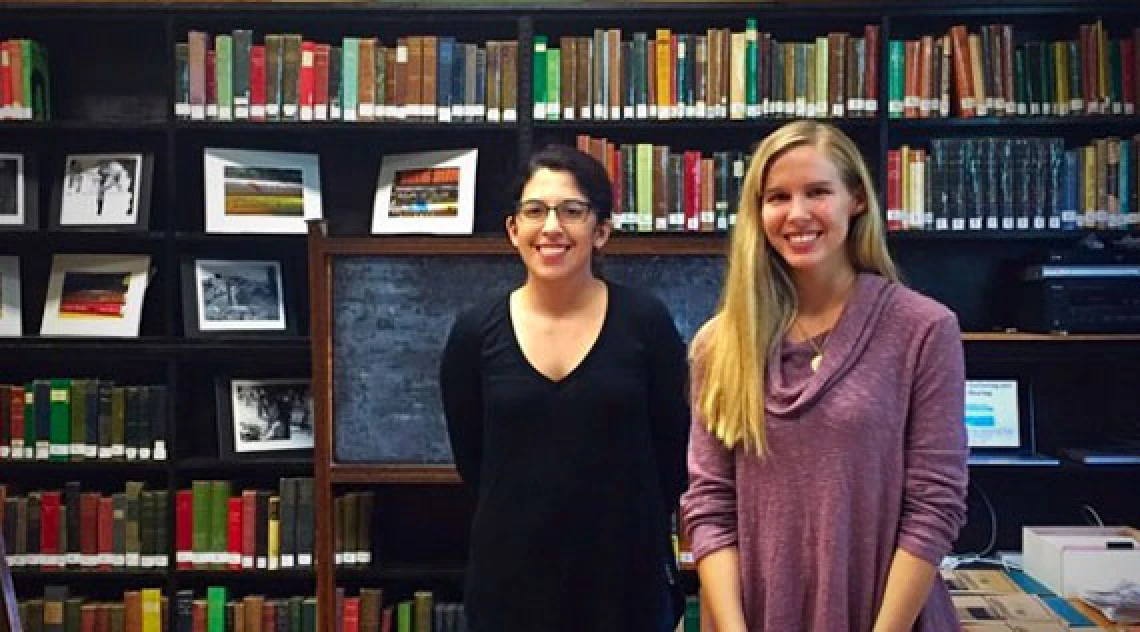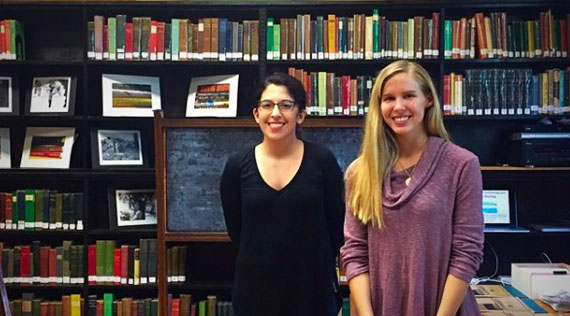UA SRP Trainee Shana Sandhaus Collaborates with Gardenroots Team to Provide Community Report-Backs to Rural Arizona Communities

 From December 13-17 2016, University of Arizona Superfund Research Program (UA SRP) trainee Shana Sandhaus attended a series of community report-backs across Arizona in Apache, Cochise, and Greenlee counties. These meetings were the final stage of the Gardenroots citizen science project, where Arizona residents living near active and legacy resource extraction and hazardous waste sites sent in their garden vegetables, soil, and water for metal analysis, testing for elements such as arsenic, uranium, and lead. The project took place over almost a year and a half, and involved training 93 participants in sample collection. In this period, 125 soil samples were analyzed, as well as 174 water samples and 267 plant samples. The results were then reported back to the residents at the meetings, which involved personalized environmental results pamphlets, a presentation on the overall results, interpretation using a risk assessment framework, and a focus group with the attendees. The participants were able to ask questions about their results, and discuss what they planned to do with their information. In addition, community members who did not participate in the programs came to learn about garden preparation, best gardening practices, and safe consumption of homegrown vegetables.
From December 13-17 2016, University of Arizona Superfund Research Program (UA SRP) trainee Shana Sandhaus attended a series of community report-backs across Arizona in Apache, Cochise, and Greenlee counties. These meetings were the final stage of the Gardenroots citizen science project, where Arizona residents living near active and legacy resource extraction and hazardous waste sites sent in their garden vegetables, soil, and water for metal analysis, testing for elements such as arsenic, uranium, and lead. The project took place over almost a year and a half, and involved training 93 participants in sample collection. In this period, 125 soil samples were analyzed, as well as 174 water samples and 267 plant samples. The results were then reported back to the residents at the meetings, which involved personalized environmental results pamphlets, a presentation on the overall results, interpretation using a risk assessment framework, and a focus group with the attendees. The participants were able to ask questions about their results, and discuss what they planned to do with their information. In addition, community members who did not participate in the programs came to learn about garden preparation, best gardening practices, and safe consumption of homegrown vegetables.
Sandhaus, a Master’s student in the Department of Soil, Water, and Environmental Science, led the focus groups, which will be part of her graduate project. In groups of two to five people, Sandhaus interviewed the participants on their motivations for participating in the Gardenroots program, their efficacy for environmental action, and the functionality of the report-backs. Since citizen science is a research method that is increasingly being used, it is important to know why participants choose to be involved in these programs, and what are the benefits, so that projects can best cater to the needs of the community. Reflecting on her experience at the meeting, Sandhaus said, “It was a very valuable opportunity to meet our participants and foster the researcher-community interaction. I was honored to be involved in this co-created project, where we worked with the community instead of simply in the community.”

